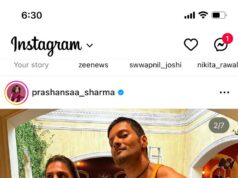In a recent investor call, Netflix co-founder and CEO Reed Hastings expressed his “frustration” with the company’s lack of success in India. Netflix added 2.6 million paying customers in the Asia Pacific area in the latest quarter, according to reports, with strong growth in Japan and India. The Over-the-Top platform, on the other hand, stated that it only plans to attract 2.5 million subscribers this quarter. Various estimates of OTT platform market share in India have been made, but all agree that Disney+Hotstar, Amazon Prime Video, and Netflix top the field, followed by platforms like Zee5 and SonyLiv. Smaller businesses such as Aha, Neestream, and others are vying for market share in a congested sector.
When it comes to OTT subscriptions in India, various issues are at play, ranging from pricing and views of value for money to pervasive piracy via websites and Telegram groups that allow consumers to watch content for free. But, even if a user is attracted into the OTT realm despite these obstacles, how excellent is the content that these players choose? Particularly for a south Indian audience that isn’t yet on these platforms and isn’t particularly interested in international content?
In India, SonyLiv was the first OTT service to start in 2013. Hotstar was established in India by the Star group in 2015 and was later purchased by Disney in 2019; Netflix and Amazon Prime Video arrived in India in 2016, with the former gaining a head start; and Zee5 arrived in 2018. The game has shifted significantly in 2020, with the COVID-19 pandemic causing countrywide theatre closures and desperate film businesses moving to OTT channels to develop and release films. OTT services are luring viewers from tier-2, tier-3 cities, and small communities in addition to urban, metro consumers.
According to statistics, India has more than 500 million (and growing) smartphone users, making it a very appealing market for OTT services. However, India is a hugely diverse country, with multiple languages and varying levels of content consumption sensibility. Aside from pricing, packages, and deals (Disney+Hotstar), for example, has rights to stream sporting events such as the IPL and ICC World Cup, while Amazon Prime Video includes Prime delivery, Prime music, and more), understanding cultural differences and preferences is critical to attracting new audiences.
India is a curious and unexpected beast, and there are many challenges ahead; nonetheless, the first step is to recognise that ‘India’ isn’t one thing, and it’s impossible to encompass its diversity in a neat term. Apart from wrangling over pricing and packaging, OTTs should examine the material they’re producing and ensure that it caters to the country’s different tastes and languages. If they want to expand and grow, this is the way to go.







